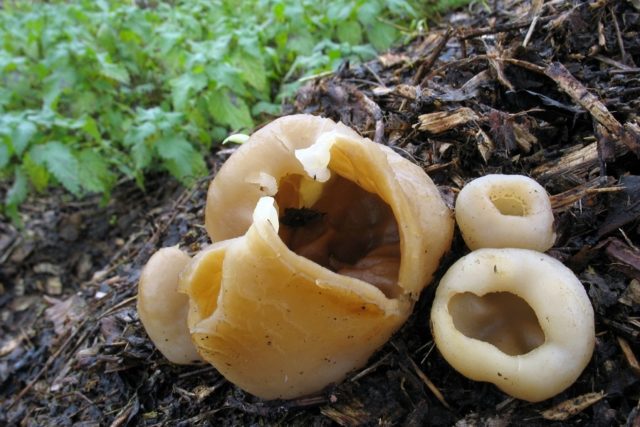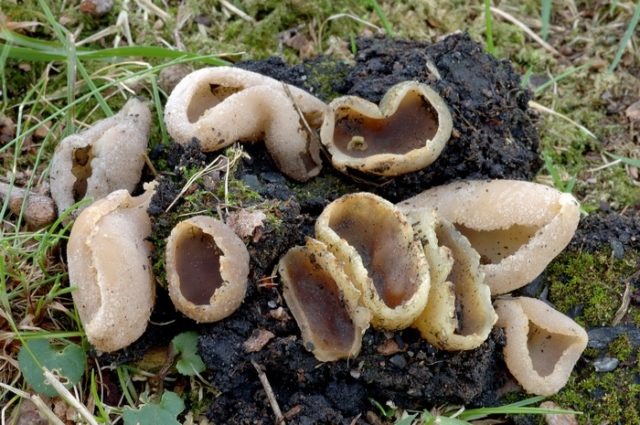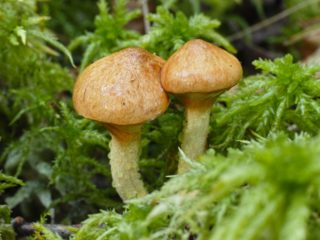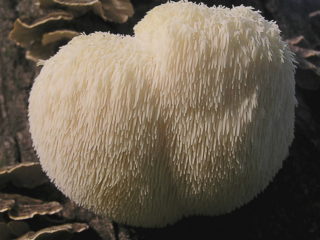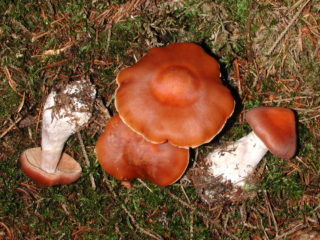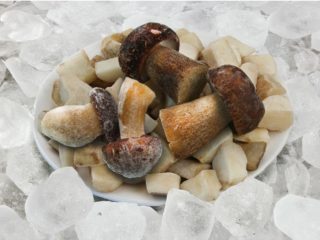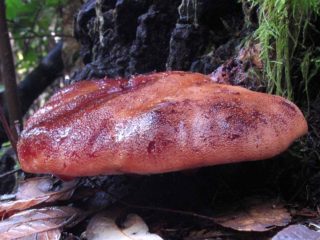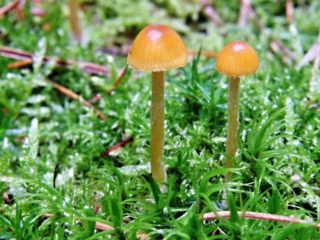Content
The bladderwort (Peziza vesiculosa) is a member of the family Pezizaceae, genus Peziza. The mushroom is very unusual in appearance, which is how it got its name.
What does a bladderwrack look like?
The bladderwort is a medium-sized mushroom, reaching from 2 to 10 cm in diameter. A young specimen looks like a bubble, but has a hole in the upper part. As it grows, the fruiting body opens up, acquiring a cup-shaped shape. An old mushroom has jagged, torn edges. There is a false leg, inconspicuous and small in size.
The outer side is sticky, waxy to the touch, pale ocher. The inside is darker; in the center of adult specimens one can observe the presence of peculiar formations in the form of bubbles.
The pulp is brownish in color when cut, dense, relatively thick for its size. The structure is waxy.When the humidity is high, the flesh becomes translucent. There is no smell, as well as taste.
The spore powder is white; the spores themselves, under a microscope, have an elliptical shape with a smooth surface.
Where and how does it grow
Bladderwort is common. It grows everywhere throughout Europe, as well as in North America. In Russia it can be found in all regions with a temperate climate.
Prefers soils rich in nutrients, can be found on rotten deciduous wood, litter, sawdust and in places where organic fertilizers (manure) accumulate. It grows in various forests, forest plantations and beyond.
Fruiting is long, the period is from the end of May to October. Fruiting bodies are arranged in groups, often large.
Is the mushroom edible or not?
The bladderwrack has no nutritional value due to the lack of taste. But the mushroom still belongs to the group of conditionally edible ones.
Doubles and their differences
The bladderwort can only be confused with similar species, namely:
- brown petticoat – is conditionally edible, has a smaller size and smoother edges without breaks, the color is much darker;
- Polar dog is changeable - belongs to the inedible species, has practically no differences in appearance, but upon careful examination you can notice the presence of small hairs on the outside.
Conclusion
Bladderwort is a conditionally edible mushroom, but due to its thin and tasteless pulp it is of no culinary value.But it is worth noting that the mushroom itself is widely used in Chinese medicine, as an assistant for strengthening the immune system, as well as in the treatment of tumor diseases of the gastrointestinal tract.
